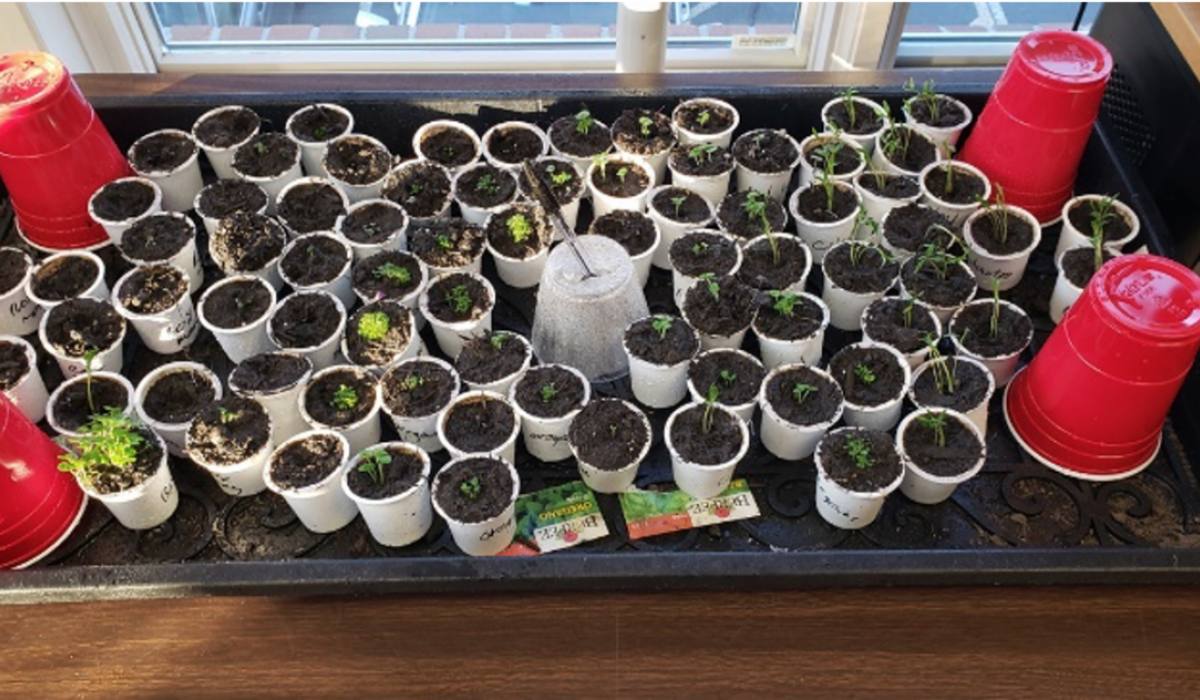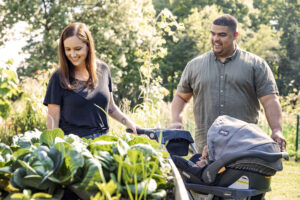Welcome back to Broc’s Blog! I am here to share with you this awesome activity to work on with your family this spring, summer, and fall! Growing a garden. You CAN do it together!
Children learn best through hands-on experiences. Let your child play in the dirt and get their hands dirty while growing a garden this spring/summer. Read on to find out about the easiest seeds to grow and the most basic methods for beginners to use. There are many tips to support you and your child, so you can produce your own food. Most importantly, gardening is a fun outdoor activity for the whole family. Imagine the excited look in their eyes when they see what you have grown together and the fruits of your labor.
Easiest Seeds to Grow with Children
Did you know that you can use your EBT card/HIP benefits to buy seeds? Learn more here; https://www.mahealthyfoodsinasnap.org/healthy-foods/massachusetts-healthy-incentives-program-hip. These seeds are the best for ease of care, short growing seasons, and fun to harvest;
| Sunflower (confectionery) | Nasturtiums |
| Lettuce | Bush Beans |
| Radishes | Carrots |
| Snow Peas | Potatoes |
| Cherry Tomatoes | Pumpkins |
Easiest Gardening Methods
Whether you live in an apartment or own your own home, gardening can be done on your patio in containers or outside in a plot. Here are some pros and cons of the top three Easiest Gardening Methods:
| Method | Pro | Con |
| In ground | Most traditional, best plant environment | Requires outdoor yard space, water access, and weed/pest attention |
| Raised Beds | Easy on the back and knees, your choice of planting soil, and less weeds attention | Costs involved in the raised bed and soil, may involve some construction |
| Containers: buckets, planters, window boxes, hanging planters, and vertical boards | Requires little space, good city option, lowest cost option | Limits your options of plants to grow to peppers, tomatoes, herbs, cucumbers, and squash, strawberries, etc. |
More home gardening information can be found at https://www.mahealthyfoodsinasnap.org/healthy-you/blog/2020/05/01/try-container-garden.
Tips for Gardening with Children
When gardening with children, it is not always about the end product. It is about the process; the skills gained, the experiences enjoyed, and the bonds deepened.
- Giving your child their own plot, raised bed, or container = Creates a sense of ownership and responsibility.
- Read some of the gardening books listed below = Prepares them for the process.
- Allow them to use real tools, not plastic toys = Shows a sense of trust.
- Start with planting the seeds indoors = Children will be more engaged when they are included in the simple steps of adding soil, seed, and water to the pots from the beginning.
- Journal the growth process with photos and drawings and share online OR make your own “2021 Garden Book” = Celebrate the process and give your child a sense of pride in their work.
- Give your child his own special chores (digging, planting, watering, tracking growth, picking produce, and preparing foods in the kitchen) = Supports your child’s sense of inclusion, responsibility, pride, and physical activity.

Why Gardening with Children is Important: Benefits, Skills, Vocabulary

Some benefits are discussed in the above section; however, the list is long. The benefits range from educational to creative to personal and physical skills. Gardening with children:
- Increases responsibility and cooperation by caring for plants and working as a team
- Builds confidence through success in growing plants and eating the food they produced
- Grows a love for nature by witnessing the plant’s need for sunlight, and water, and tending to weeds
- Develops a deeper understanding of science: the life-cycle of plants, animals, insects, weather, environment, nutrition, cooking, and simple construction
- Adds more exposure to math: measuring seedlings’ progress in inches and feet, counting the days of growth, estimating outcomes, making calculations, comparing growth rates, finding different leaf or flower shapes, and weighing produce
- Boosts vocabulary: roots, stem, leaves, flowers, fruit, fern, moss, conifer, compost, fertilizer, germination, gloves, hoe, hose, mulch, photosynthesis, rate, seeds, shears, shovel, soil, sprout, sunlight, water, weeds, wheelbarrow, worms and so much more!
Garden Journaling
Simple journals can be made with a few pieces of paper, a stapler, and a pencil. It is up to the child to add color with crayons, markers, or special stickers. Parents can help the child take photos, print them, and cut them to size to add to the book pages. Some items to track while on this gardening journey together include the date, weather, temperature, garden tasks completed, tracking plant growth, new words, challenges, surprises, and any other observations while outside, such as birds, insects, animals, planes, or cloud shapes. Some other pages could show pressed leaves or flowers from the different plants. Parents can write stories of the child’s garden or if they are old enough have the child create a poem or a song about their garden. Basically, have fun and share your garden story with others.
Kick off your gardening story with this groovy Broc Gardening Coloring page! https://www.mahealthyfoodsinasnap.org/sites/default/files/UMASS_Document_SNAPED_ColoringP_GardeningBroc_2021.pdf
And wrap up your gardening game with kid-friendly recipes found here, https://www.mahealthyfoodsinasnap.org/healthy-foods/recipes.
Gardening Book Resources: visit your local library for these and other age-appropriate children’s books, https://libraries.state.ma.us/.





